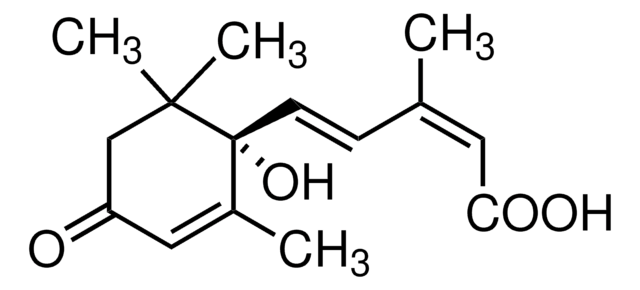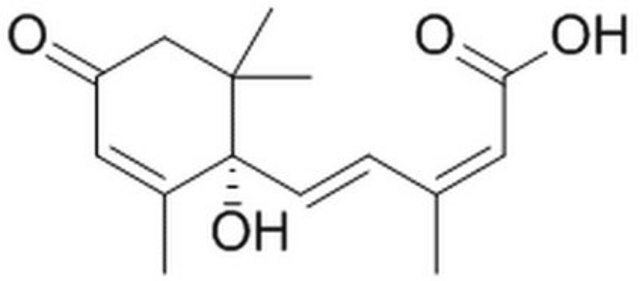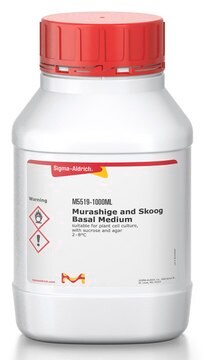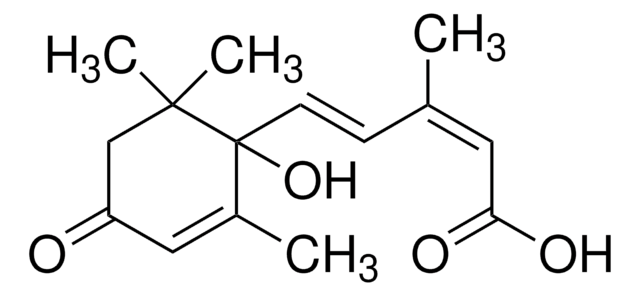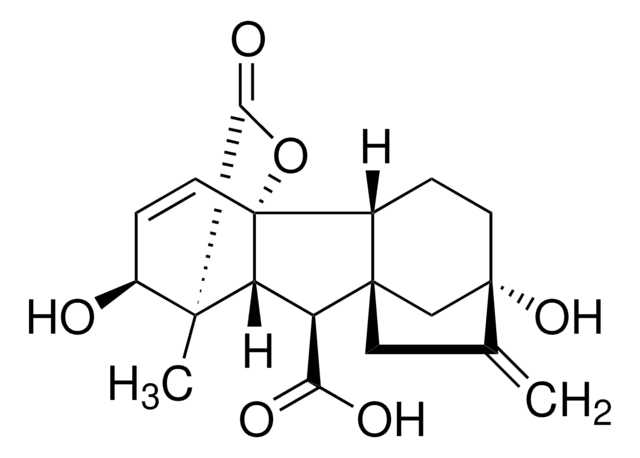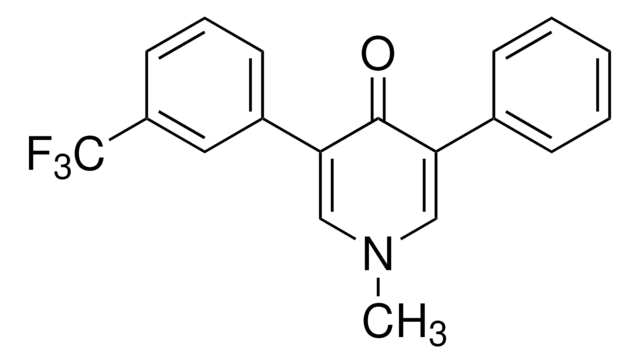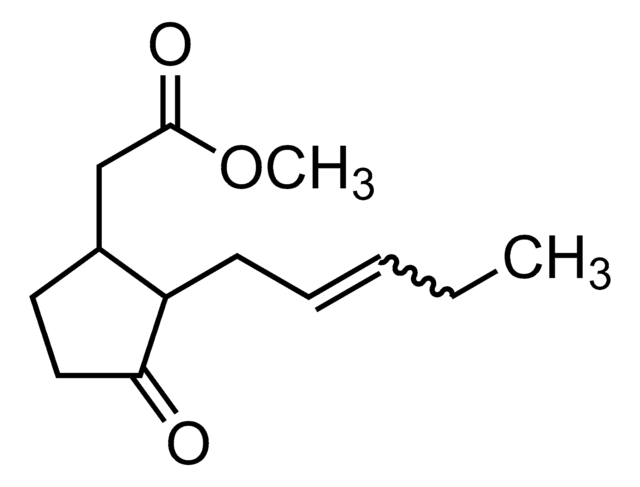A1049
(±)-Abscisic acid
suitable for plant cell culture, BioReagent, ≥98.5% (HPLC)
Synonym(s):
(2Z,4E)-5-(1-Hydroxy-2,6,6-trimethyl-4-oxo-2-cyclohexen-1-yl)-3-methyl-2,4-pentadienoic acid, ABA, Dormin
About This Item
Recommended Products
product line
BioReagent
Assay
≥98.5% (HPLC)
form
powder
technique(s)
cell culture | plant: suitable
mp
186-188 °C (lit.)
solubility
methanol: 50 mg/mL, clear to slightly hazy
application(s)
agriculture
storage temp.
−20°C
SMILES string
CC(\C=C\C1(O)C(C)=CC(=O)CC1(C)C)=C\C(O)=O
InChI
1S/C15H20O4/c1-10(7-13(17)18)5-6-15(19)11(2)8-12(16)9-14(15,3)4/h5-8,19H,9H2,1-4H3,(H,17,18)/b6-5+,10-7-
InChI key
JLIDBLDQVAYHNE-LXGGSRJLSA-N
Looking for similar products? Visit Product Comparison Guide
Application
Preparation Note
Storage Class Code
13 - Non Combustible Solids
WGK
WGK 3
Flash Point(F)
Not applicable
Flash Point(C)
Not applicable
Personal Protective Equipment
Choose from one of the most recent versions:
Already Own This Product?
Find documentation for the products that you have recently purchased in the Document Library.
Customers Also Viewed
Our team of scientists has experience in all areas of research including Life Science, Material Science, Chemical Synthesis, Chromatography, Analytical and many others.
Contact Technical Service